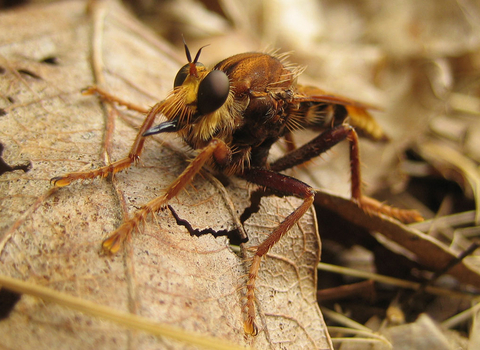
Hornet Robberfly ©Cécile Bassaglia
Hornet robberfly
With black-and-yellow markings, the Hornet robberfly looks like its namesake, but is harmless to us. This mimicry helps to protect it from predators while it perches in the open, waiting for its own prey.
Scientific name
Asilus crabroniformisWhen to see
June to OctoberTop facts
Category
Stats
Body length: 2.5cmPriority species under the UK Post-2010 Biodiversity Framework.
